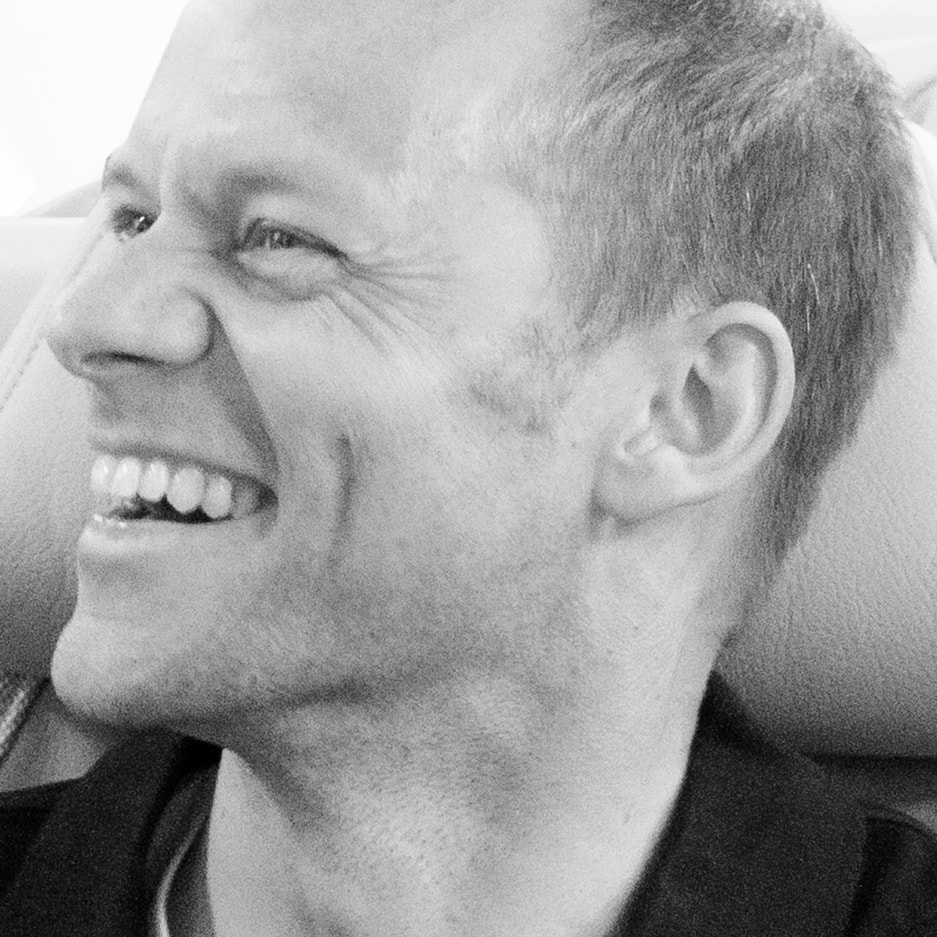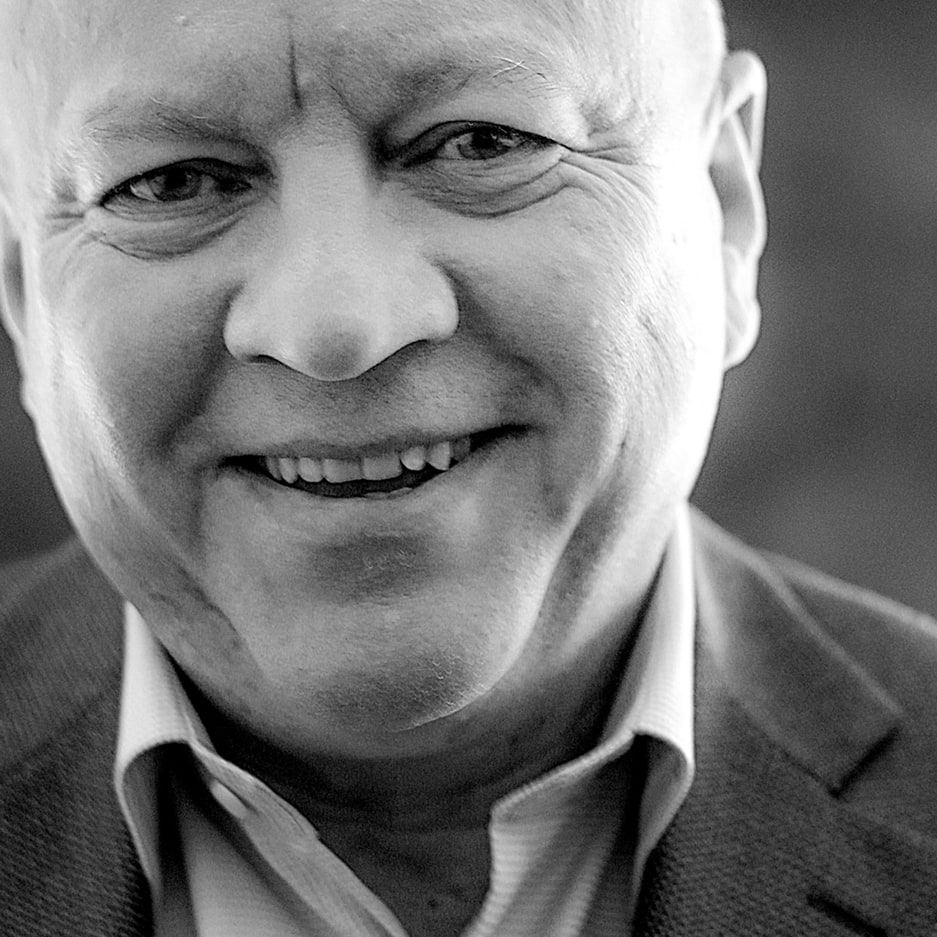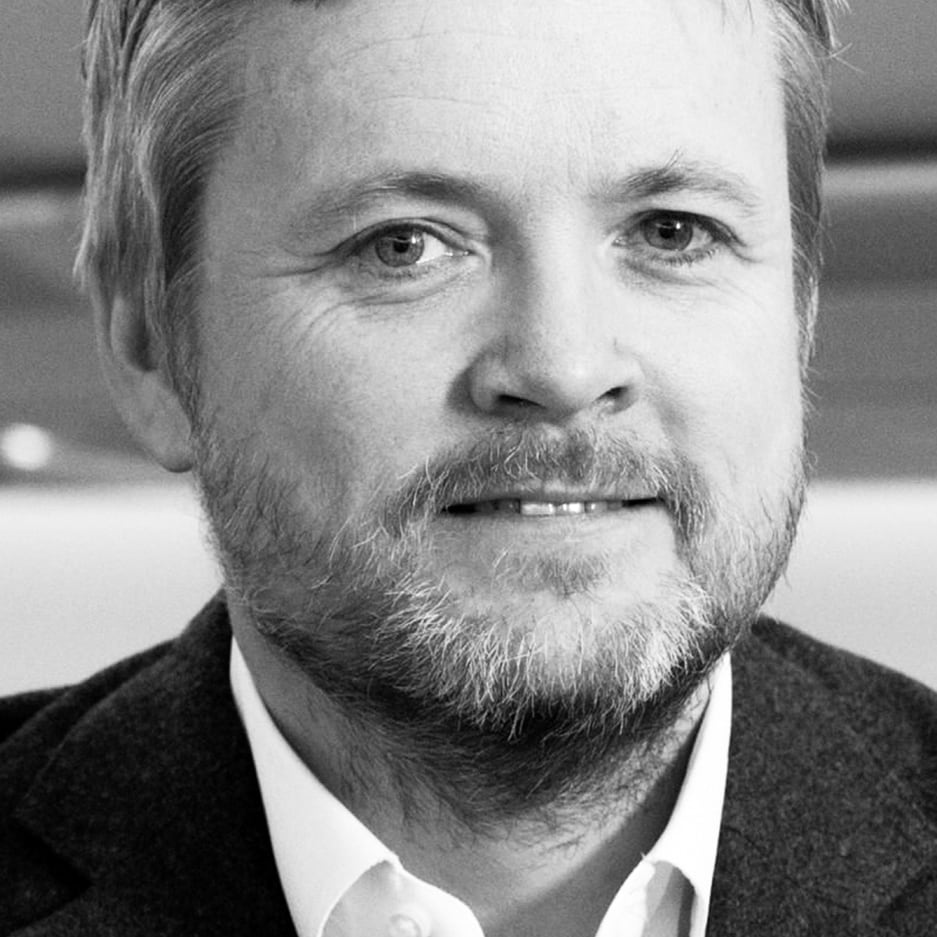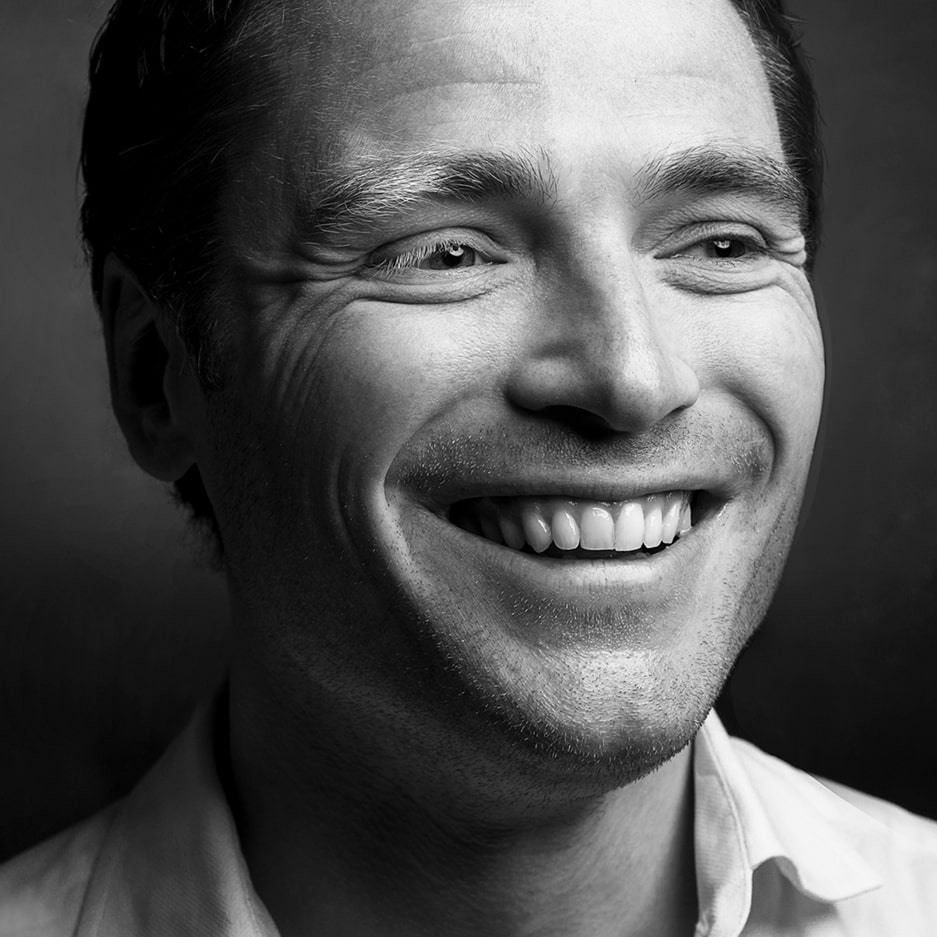There’s been much to applaud in the past 40 years, but it’s all for naught if we don’t know where we’re heading. Some of the industry’s brightest minds are recognized here for their vision of the passenger experience of the future.
Meet some of our industry’s thought leaders at this year’s APEX EXPO

MARTINE VAN DER LEE – DIRECTOR OF SOCIAL MEDIA, KLM
For Walking the Talk on Direct Customer Communications Online
KLM piloted the use of artificial intelligence (AI) in its customer-service operations three years ago, and 50 percent of its social interactions are now supported by the technology – something Martine van der Lee says makes her team of 350 (the largest social media team in the world) twice as productive.
Conversational interfaces – be they social media, messaging apps or voice-activated systems – will continue to play a major role in the passenger experience of the future, and when combined with AI, they’ll yield entirely new user experiences and commercial opportunities, van der Lee says. “We believe service will become real-time and proactive, with complete trips being booked and planned through conversational interfaces,” she says. “Building your brand and business with conversation is the future.”

CLYDE HUTCHINSON – HEAD OF INNOVATION, VIVA AIR LABS
For Rooting Out Regional Travel Deterrents
In Latin America, the journey to the airport could cost a traveler just as much as the airfare itself, says Clyde Hutchinson, identifying one of the pain points low-cost carrier Viva Air sought to address with the inauguration of South America’s first aviation innovation lab last year. Regarding the question of urban mobility, Viva Air Labs is slated to run a pilot project this fall at José MarÃa Córdova International Airport in Colombia to deliver a multimodal solution that would allow passengers to get to and from the airport inexpensively and efficiently.
Another segment of the journey begging to be reconsidered, according to Hutchinson, is the airport, which in addition to long queues and baggage woes offers food that “is typically unhealthy and lacking character or a sense of place” and a “duty-free bargain that is now more expensive than you can buy at home online.” Hutchinson envisions airports of the future taking cues from models like WeWork and Selina “rather than the declining shopping mall,” and as one of the lab’s only full-time employees, he is eager to prototype new solutions from innovators and entrepreneurs in the region.

DR. MARK HILLER – CEO, RECARO AIRCRAFT SEATING
For Not Resting Until Passengers Can Do So Comfortably, Too
Space and comfort are compromised in the aircraft cabin, but the application of new materials and technologies could mitigate the impact flying has on sleep, posture and pressure points – even in the main cabin, says Dr. Mark Hiller. Recaro was awarded the 2019 Crystal Cabin Award for “Passenger Comfort Hardware” for a trio of comfort elements designed for long-range economy-class flying, and recent partnerships with jetlite for human-centric lighting that reduces the effects of jet lag, and Airbus for an Internet of Things-enabled cabin environment, show that Dr. Hiller isn’t resting on his accomplishments.
When it comes to his vision for the future of the passenger experience, Dr. Hiller expects seats to be fully customizable and adaptable. “Passengers will be able to determine how their seat will look, which comfort options will be available and what additional services they will receive,” he says, adding, “There is also a growing trend to increase the sustainability of a product and reduce its environmental impact – efficiency is a key consideration.”

STEVE KING – CEO, BLACK SWAN DATA
For Making Sense of Today’s Numbers for Tomorrow’s Reality
“It’s shocking, really, when you look at all the airlines that are going bankrupt these days. I think it’s a moral responsibility for all of us working in the business to help them out, because without them we simply don’t have any business,” says Steve King, explaining why Black Swan Data’s aviation arm, Fethr, isn’t just about creating pioneering artificial intelligence (AI) tools for airlines, but also pairing these with business models that allow airlines to keep flying. “Right now, airlines are being penalized with everything new they are trying to do. They shouldn’t be paying for things when they’ve got loads of passengers sitting idle-thumbed,” he adds.
A self-proclaimed geek, King believes airlines can harness the growing ubiquity of in-flight connectivity – and the resulting onslaught of data – to better understand passenger behavior patterns and create personalized and profitable in-flight experiences. Armed with strong industry alliances – Panasonic Avionics has helped it get airline exposure and Gate Gourmet has allowed it to experiment with menus and crunch data on waste – Fethr is well-positioned to make that happen. “I can talk as much as I want about algorithms and AI, but we need the people who can actually implement the change on our side,” he says.

AIREEN OMAR – DEPUTY GROUP CEO, TECHNOLOGY & DIGITAL, AIRASIA
For Building the Digital Airline of This Generation’s Dreams
It seems like every airline these days is pontificating on plans to become the “Amazon of travel,” but AirAsia is actually doing something about it, having just this spring announced plans to erect an e-commerce lifestyle app it hopes will surpass the size of its airline business. CEO Tony Fernandes intends to spend up to $22.5 million a year to transform the low-cost carrier into a technology-first company, and the woman tasked with the job of heading digital strategy and encouraging innovation and collaboration across the business is Aireen Omar.
Nearly two decades after becoming the first in the region to issue e-tickets, AirAsia – fortified by a mega-pool of consumer data from its booking engine – is now primed to take on non-airline companies, too. “Any startup, or even the existing players, would love the data that we have on our consumers and their behavior,” Omar told Nikkei Asian Review. To expand its core business, AirAsia this year launched a venture-capital arm, called RedBeat Ventures, of which Omar is its CEO, to invest in startups operating in travel, lifestyle, logistics, cybersecurity, artificial intelligence, fintech and more.

DAVID BARTLETT – CHIEF TECHNOLOGY OFFICER, PANASONIC AVIONICS
For Realizing the Possibility of Wellness on Board
Not long ago, mobile phones did little more than make calls – now they are personal devices containing entire worlds. Panasonic Avionics is planning a similar shift for the humble in-flight entertainment experience: “We are transitioning IFE systems to be digital platforms that drive new outcomes in addition to just playing movies,” says Bartlett.
The company’s Wellness solution is a great example of how an open framework could deliver entirely new and personalized experiences for passengers. It integrates with external apps such as Calm, myNoise and Mimi, and can also combine with an Internet of Things endpoint to provide better noise reduction, lighting and air cleansing. The company is even working with ecosystem partners such as wellness retreats to deliver new content. “Because of advances like these, I’m a firm believer in our aspiration that tomorrow’s passengers will leave the plane feeling even better than when they boarded,” Bartlett says.

GIL WEST – SENIOR EVP AND CHIEF OPERATING OFFICER, DELTA AIR LINES
For Fostering Technological Innovation From the Inside Out
They say if you want something done right, you ought to do it yourself. This might be what Gil West had in mind with the creation of Delta Air Lines’ wholly owned subsidiary Delta Flight Products (DFP), which began as a vision to help the airline take control of the most complex aspects of aircraft interiors. In addition to facilitating mid-life interior modifications, DFP has already yielded its own wireless streaming in-flight entertainment technology, enabling the reduction of about one pound (half a kilogram) of wiring per seat, the company reports. As a result, Delta’s modified Boeing 767-400 fleet will eliminate about 1,330 metric tons of carbon emissions annually.
DFP, along with The Hangar, Delta’s global innovation center, are “key channels we’re using across the business to constantly explore new ways to turn air travel into a part of the journey to get excited about,” West explains. “Customers expect their experiences with Delta to align with those of other great brands, so as technology advances at warp speed, we will continue innovating to transform flying in the ways customers and employees tell us are most important.”

DUPSY ABIOLA – HEAD OF GLOBAL INNOVATION, INTERNATIONAL AIRLINES GROUP
For Believing in a Sustainable, Technology-Enabled Future
As a young barrister, Dupsy Abiola found herself abandoning her career and setting up her own intern recruitment company: an online meeting place where students and graduates could be matched with employers. To get Intern Avenue off the ground, she delivered the pitch of a lifetime on Dragons’ Den, where she was offered an investment of £100,000. Several years later, she now sits on the opposite side of the pitch table for Hangar 51, International Airlines Group’s (IAG) accelerator program, which gives startups the chance to rapid-pilot their ideas on an airline’s global scale. (Past participants have included Volantio, Inflight VR and Mototok.)
“Most corporate accelerator programs are externally based, but we’ve really committed to having startups working side by side with our c-level, senior executives and everyone in our offices for 10 weeks. This level of engagement gets the best value for us and for them,” Abiola says. Her ultimate vision for the future of travel? “Seamless, sustainable and powered by technology.” This year’s iteration of the Hangar 51 innovation program includes a sustainability category, with a focus on carbon offset, carbon capture and innovative waste management, giving weight to Abiola’s vision.

DEVIN LIDDELL – PRINCIPAL FUTURIST, TEAGUE
For Innovating at the Seams of Transport Industries
While industry insiders are touting the need for seamless air travel, Liddell is busy imagining a future for the seams surrounding that journey – be they the transition from city to airport, security checkpoint to gate, or aircraft cabin to hotel room. “These in-between moments, these handoffs, are the real opportunities for breakthrough design that delivers better passenger experiences and better aviation-based businesses,” Liddell says.
As a regular contributor on Fast Company, Liddell has written about the looming effects of lost airport parking revenue at the hands of ridesharing and autonomous vehicles, the role of artificial intelligence in airport processing and radical alternatives to current airline practices, such as the introduction of Amazon-style subscriptions. Through regular work with clients like Toyota, Amazon and Google, Liddell bolsters his intermodal focus with intimate knowledge, not blanket assumption. “People will sometimes ask me why I’m so active within both commercial aviation and autonomous vehicles, for example. The reason is super-straightforward,” he says. “Both of their futures are deeply intertwined.”

PAUL EDWARDS – HEAD OF CREATIVE DESIGN, AIRBUS
For Flexing Imagination Inside the Confines of the Cabin
The parameters of comfort, service, ambience and design in the cabin are undergoing a process of expansion, says Paul Edwards, the main creative architect behind Airbus’ Airspace. “Airlines will offer passengers in all classes much more choice and flexibility, including the ability to select a flight experience based on their personal needs, which are very different for business or leisure, for old or young or for traveling alone or with family,” he says. And while in the past, the cabin experience was punctuated by stand-alone cabin elements – seats, galleys and lavatories, for instance – with greater digitization these will conjoin, and an Internet of Things-enabled environment will become the standard.
“IoT is about so much more than just voice-activated controls,” Edwards says. “We will see the merging of lighting and display technology to create truly unique, inspiring spaces and atmospheres where ambience and functionality combine, enhanced by augmented reality and supportive multimedia technologies such as surface lighting, OLED screens and artificial outside views.” A visualization of these digitally enhanced spaces was made public at this year’s Paris Air Show, where Airbus released its Airspace Cabin Vision 2030. Like the airframer’s Concept Cabin 2050, the vision for 10 years out is driven by passenger needs, Edwards says, but is “just a little closer to reality!”

MICHAEL IBBITSON – EVP, TECHNOLOGY AND INFRASTRUCTURE, DUBAI AIRPORTS
For Daring to Find a Simpler Way Through the Airport
The fact that passengers still have to queue at check-in, passport control and the gate to prove who they are when they’ve already provided all that info weeks or even months out “is just bizarre,” says Michael Ibbitson. A system that ensures traveler identities are made available to all the entities before they arrive would improve the experience for travelers and reduce the amount of space dedicated to processing in airports, Ibbitson says. The reallocation of space is something that would certainly benefit an airport like Dubai’s, which saw 22 million travelers pass through its doors in the first quarter of 2019 alone.
“It’s not a simple task because it’s cross-border, cross-jurisdiction and it covers many ideologies and governments,” Ibbitson says. But Dubai Airports is working closely with IATA, as well as other airports and airlines, to create a system that is standardized across the entire industry, with trials already completed between London and Dubai and pending for London-Dubai-Australia. Ibbitson insists this type of industry-wide collaboration isn’t unprecedented: Widespread standardization of barcode boarding and e-ticketing have already been achieved, for example. “Surely we can do the same with identity and biometrics,” he says.
“The New School” was originally published in the 9.4 September/October issue of APEX Experience magazine.


